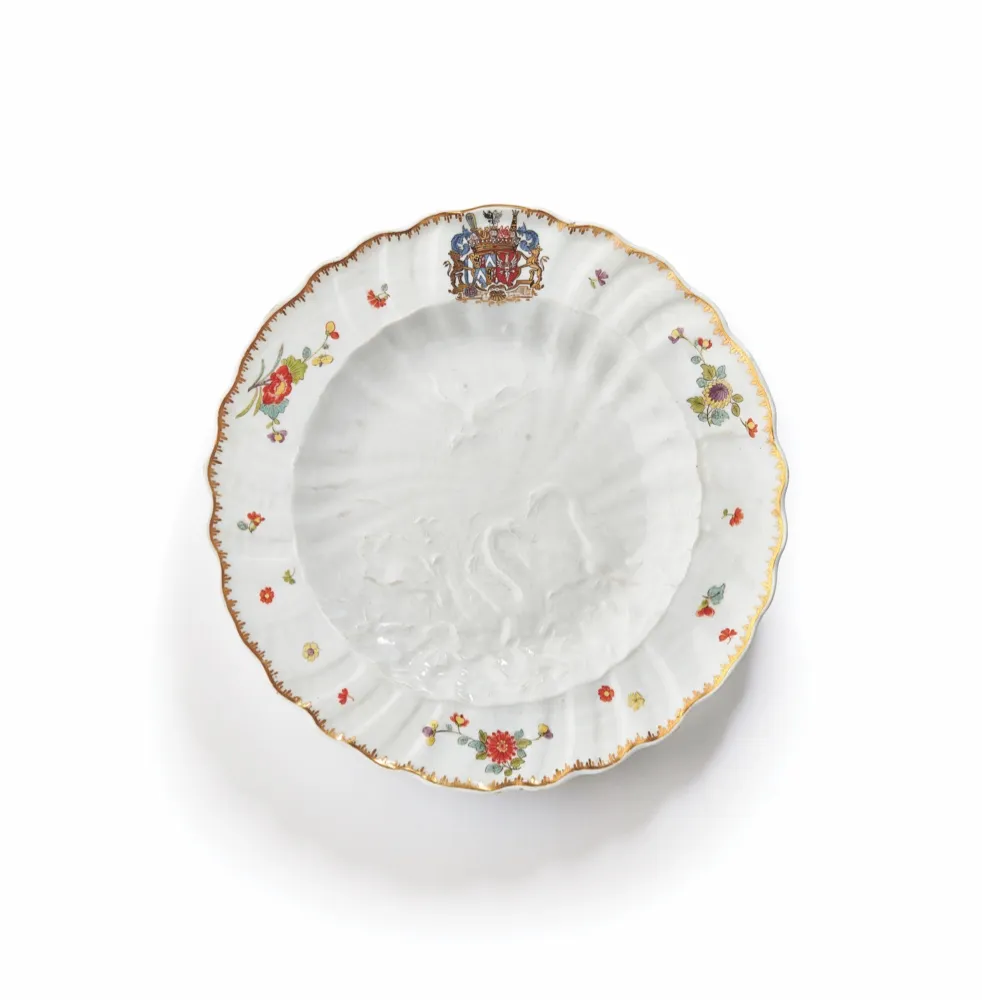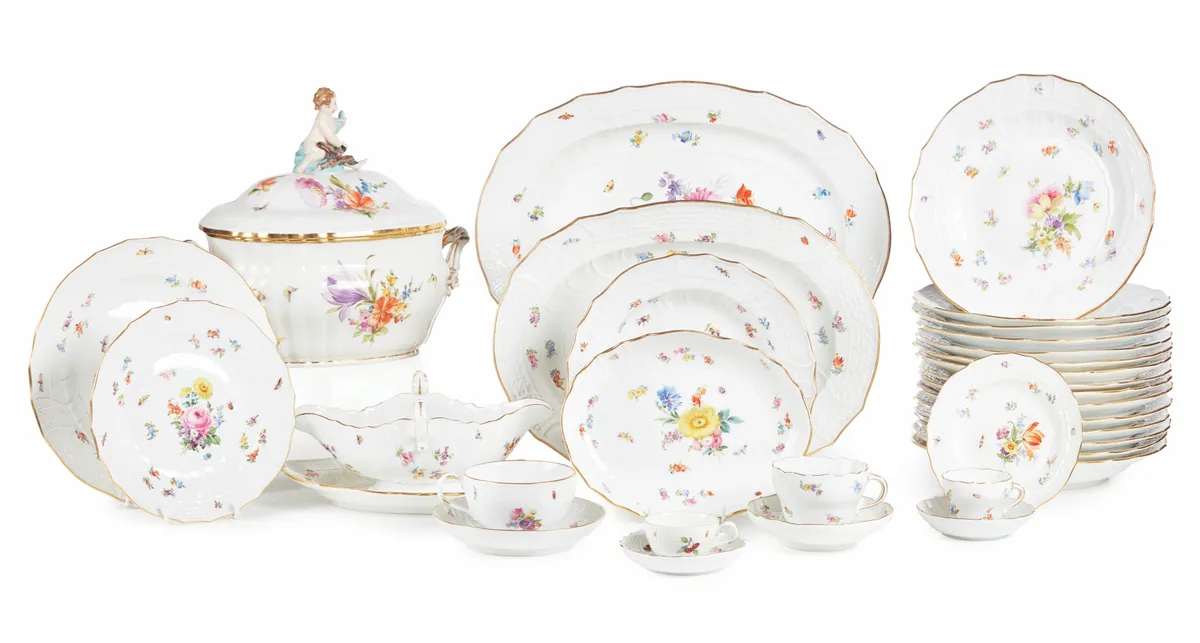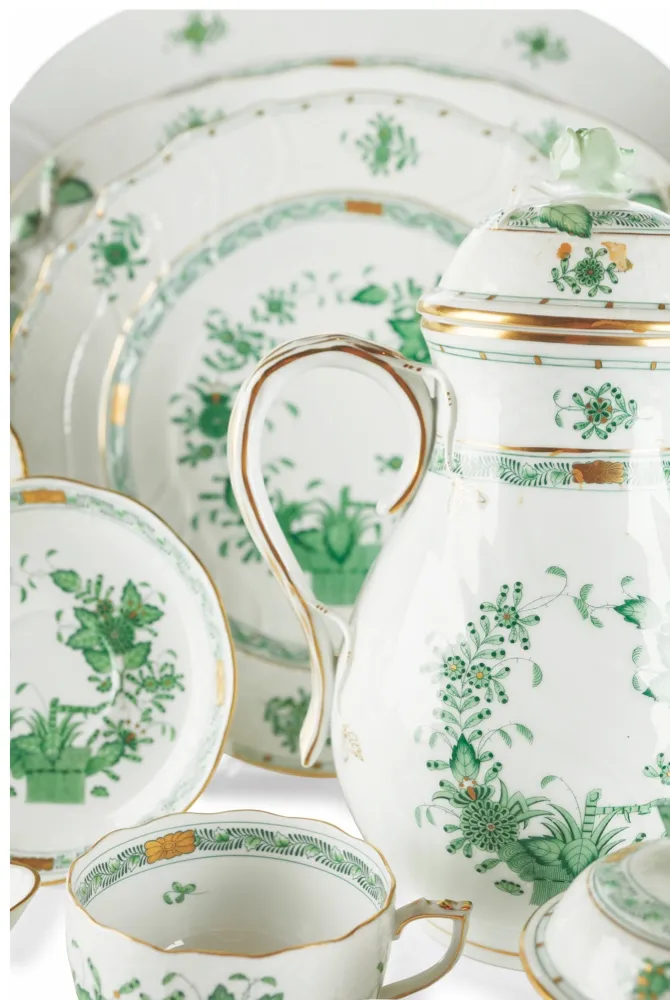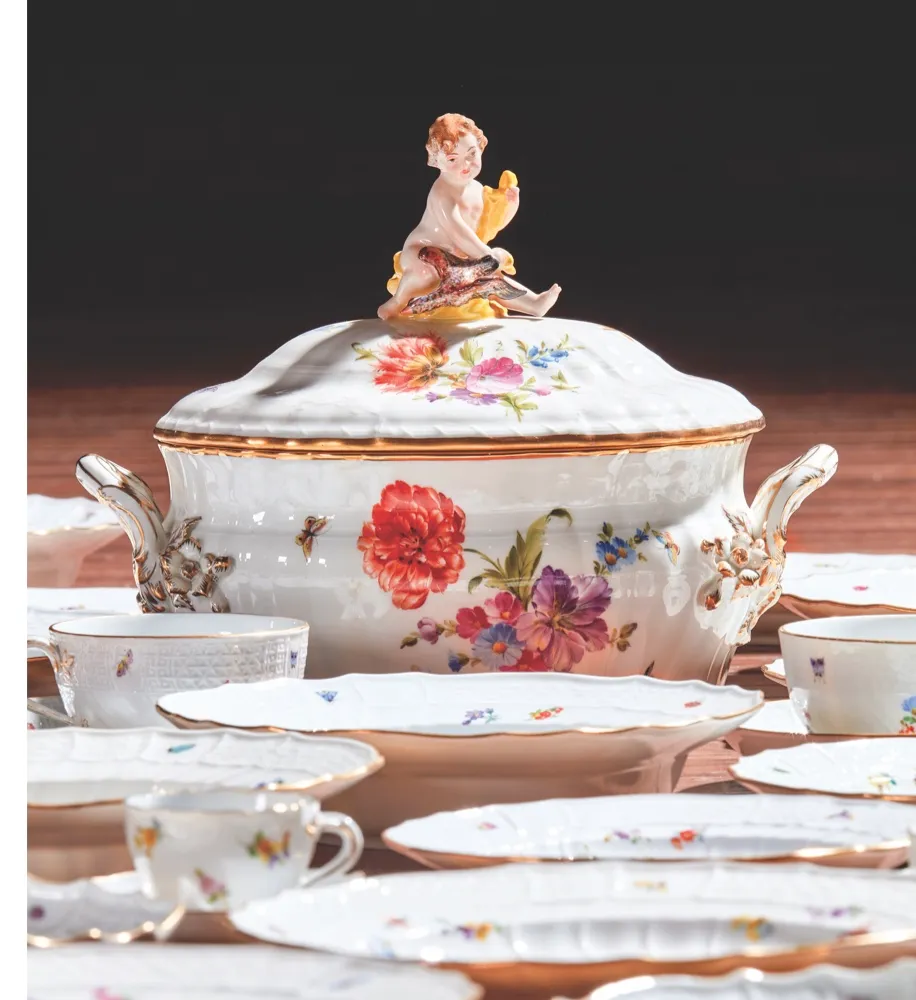Before the early 18th century, true porcelain was imported to Europe from China where it had been made for many centuries. Referred toas ‘white gold’, porcelain was a valuable commodity, its recipe a closely guarded secret.
It was alchemist Johann Friedrich Böttger, who finally worked out the formula, and in 1710, Augustus the Strong, Elector of Saxony and King of Poland established the Meissen factory near Dresden. Other manufacturers, such as Sèvres, soon caught up, and gradually the recipe and associated techniques travelled across Europe as factories were amalgamated and workers moved on.
Initially, decoration was hand-painted, a skilled and time-consuming process, meaning dinner services were the preserve of royalty or the very wealthy. The Swan dinner service,
for example, produced by Meissen for Heinrich, Count von Brühl in the 1730s, comprised 2,200 pieces, all featuring relief-moulded swans and hand-painted flowers. It took four years to complete.

Housed at Schloss Pförten, the Count’s home, it remained largely intact until the end of the Second World War, when soldiers from the Russian Army, briefly stationed at the Schloss, reputedly used the service for target practice. Recently, Lyon & Turnbull sold a single plate from the Swan service for £7,500 – it had been acquired by a collector in 1958 for £225.
Personally, I think 18th and early 19th-century porcelain is absolutely beautiful, often gilded and decorated with wonderful, delicate scenes. We rarely come across large Georgian dinner services at auction but, when we do, we usually talk about ‘part dinner services’ because we can never be sure we have the entire set. Things are handed down over the years and split between siblings and, of course, there are the inevitable breakages. Often the visible mends, such as stapling along the joins, are quite fascinating and should be seen as part of the history of the service.
Transfer printing was the next advance, in the 1750s, and used on earthenware from about 1780. This technique allowed for mass-production, which gave the growing middle classes access to affordable decorative dinner services. Blue was the most popular colour, as it imitated expensive blue-and-white Chinese porcelain. Ordinary people would sometimes amass services piece by piece, buying a few plates, then a tureen, and so on.
Large dinner services are no longer popular as we don’t entertain in the same lavish way. Buyers also say they’re put off antique china because it can’t go in the dishwasher. As a result, antique dinner services are widely available at auction, and pricesare often affordable or modest, especially when compared to brand new Meissen, Villeroy & Boch, Herend and Royal Crown Derby. The history of these brands is the keyto their value, but it’s also to do with the quality ofthe product.

What to consider when buying an antique dinner service
1
Look for good makers
When buying at auction, look for good makers, such as Meissen, Wedgwood and Herend. Some early pieces are unmarked, so be guided by what you like.

2
Inspect the pieces
Take a careful look at the items if you can, or request a condition report from the salesroom. Damage could affect the price if you sell the service in the future.
3
Choose the most valuable items
Platters, tureens, tazze and serving dishes will be the most valuable items in any given service and are often the most decorative pieces.
